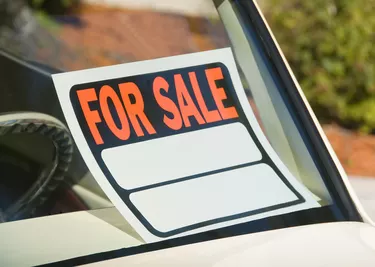
Typically, fair value is the current price for which an asset could be sold on the open market. Book value usually represents the actual price that the owner paid for the asset. The two prices may or may not match, depending on the type of asset. The difference between the book value and fair value is a potential profit or loss. There is no way to know which you'll have until you sell the asset.
Book Value
Video of the Day
The book value of an asset equals the price that you paid minus any depreciation in value of the asset. Book value either stays the same or falls.
Video of the Day
Fair Value
The current price on the open market rises and falls depending on several factors that have nothing to do with the book value of your asset. It can increase or decrease after you buy the asset.
Other Considerations
Fair value is used to figure replacement cost. Book value isn't used when replacing assets or figuring the amount of insurance needed on your current assets, as replacing an asset involves buying it at market price. Fair value indicates whether your asset is priced too high or too low.